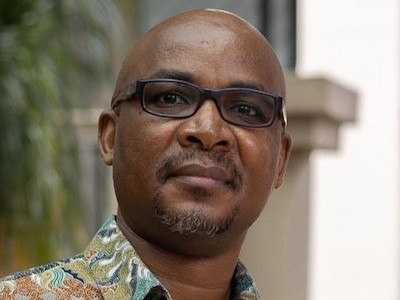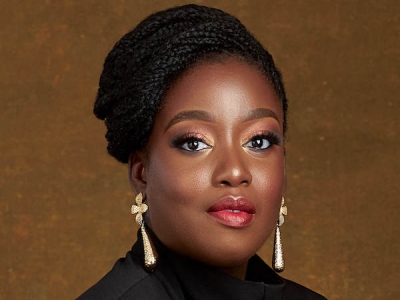 Bill Cross is a professor in the Department of Political Science at Carleton University and is studying in the MPNL program, researching governance of national sports organizations (NSOs), which oversee the administration of sports in Canada. He teaches a course in sports and politics, and has been researching Sport Canada’s lack of oversight of NSOs. He spoke to PANL Perspectives about NSOs and the relationships between NSOs and government — and what can be done to increase oversight of NSOs and decrease abuse in sports.
Bill Cross is a professor in the Department of Political Science at Carleton University and is studying in the MPNL program, researching governance of national sports organizations (NSOs), which oversee the administration of sports in Canada. He teaches a course in sports and politics, and has been researching Sport Canada’s lack of oversight of NSOs. He spoke to PANL Perspectives about NSOs and the relationships between NSOs and government — and what can be done to increase oversight of NSOs and decrease abuse in sports.
Question: Why does government have a role in sports, and how is government involved in terms of sports governance?
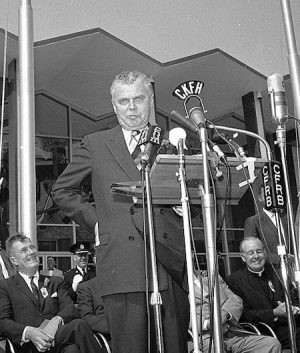
Prime Minister John Diefenbaker at the opening of the Hockey Hall of Fame in 1961.
Bill Cross: Governments have a huge role. They’ve been releasing sports policies for seventy years; Canada’s first Sports Minister was under Prime Minister John Diefenbaker, who was himself a big sports fan.
Canada has sports policies with enormous objectives, everything from creating national unity to integrating new immigrants into society — to creating social cohesion within communities to creating an international brand of excellence for Canadians through the Olympics. Also, the Truth and Reconciliation Committee has five Calls to Action that deal with sports, because sports has an important role to play in reconciliation with Indigenous communities. Then there are all the goals around health benefits and personal development. The federal government has had these aspirations and has put out all these policies, yet they’ve been lax over the years in terms of oversight of NSOs that they fund.
NSOs are at arm’s-length from the government, yet they’re substantially funded by the federal government. One of the challenges is that you need a lot of coordination between federal and provincial governments if you’re going to get to effective oversight of NSOs and their provincial counterparts — and the coordination could be even more complicated if you consider that most sports are delivered at a municipal level, through city-run programs.
Q: Why and how is there a lack of government oversight of NSOs?
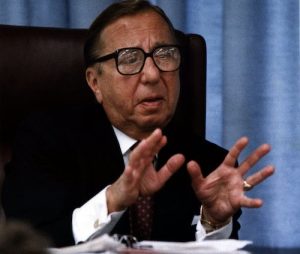
Ontario Appeal Court Chief Justice Charles Dubin led the “Commission of Inquiry Into the Use of Drugs and Banned Practices Intended to Increase Athletic Performance,” or the “Dubin Inquiry,” released in 1990.
Cross: It goes back decades. If you read the report of the Dubin Inquiry, the inquiry after Ben Johnson was caught doping, more than 30 years ago, you’ll see there were federal officials back then who basically said, ‘We have no regulatory authority. We just fund the NSOs.’ Charles Dubin, the commissioner of the Inquiry, pushed back on this claim and essentially said, ‘Wait a minute. If you fund them, then you do have some obligation, you must have a regulatory role.’
This has been an ongoing, back-and-forth issue where the government and Sport Canada issue recommendations and mandates but are unclear about what sort of oversight there is or will be. There are examples of the government calling for NSOs to do things, and the NSOs didn’t, and there were no apparent penalties in terms of withholding funding — and that’s a big part of the criticism in the last few years in Canada.
Q: How is anyone tackling these problems? Did the federal government’s parliamentary committees help anything?
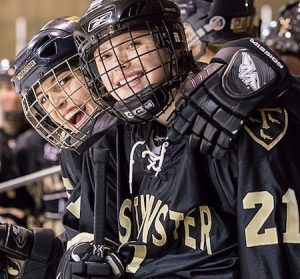 Cross: There were two committees. The Standing Committee on the Status of Women looked specifically at the experiences of women in sport. Young girls have traditionally been under-represented in participation in sport. The committee was interested in how to increase access and participation, but it also veered into girls’ and women’s experiences, and how to address them when other controversies came to light.
Cross: There were two committees. The Standing Committee on the Status of Women looked specifically at the experiences of women in sport. Young girls have traditionally been under-represented in participation in sport. The committee was interested in how to increase access and participation, but it also veered into girls’ and women’s experiences, and how to address them when other controversies came to light.
But the committee that was most in the news, in 2023, was the Standing Committee on Canadian Heritage, which, from a parliamentary perspective, oversees sport in Canada. These committee hearings started, really, because of Hockey Canada, and brought in a lot of other NSOs, athletes and academics to give their testimonies. Canadians learned about the problems in our sporting system. We tend to think of sports as a feel-good activity. We cheer for our favourite teams. We play in our beer league on Friday nights. But hundreds of millions of tax-payers’ dollars are spent, and millions of young people’s lives are involved at community levels. Without proper safeguards, people are subject to abuse and unpleasant experiences. The committee and hearings provided opportunities for Canadians to learn about what’s happening in terms of governance and alleged abuses in our sporting system.
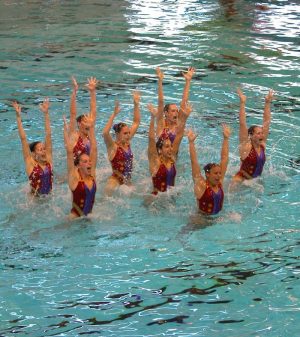
Artistic swimming athletes have been seeking damages for alleged abuse by national team coaches.
The committees also provided an opportunity for the opposition parties, and athletes as well, to push back and say, ‘There has to be more oversight and regulation.’ One result was that there was some really good journalism done that provided focal points for the parliamentary committee, raised public awareness, and put pressure on the government regarding the glaring lack of oversight in spending all this money in an important area of public policy and people’s lives. And the hearings weren’t only about Hockey Canada. There were abuses, problems and allegations in gymnastics, bobsleigh and skeleton, artistic swimming, figure skating, and on and on.
In my mind, the $64,000 question is: Why hasn’t Sport Canada been more proactive in trying to enforce rules through funding mechanisms? They really seem out of touch.
There was a story, for example, about Sport Canada issuing glowing “report cards” for governance of certain NSOs in 2022 – Sport Canada gave NSOs high marks — when serious problems were being raised about those same NSOs. It makes you wonder about Sport Canada.
The enforcement in sport should be similar to the process in federal funding for healthcare. The federal government doesn’t have authority over healthcare under the Constitution, but it exercises the provisions of the Canada Health Act using the power of the purse: the government will give funding only if provinces and territories agree to certain things. Unfortunately, Sport Canada hasn’t consistently enforced regulations that way — or in any other way.
Q: In terms of governance, how have sports organizations gotten away with abuses over long periods of time? I mean, some of it seems systemic.
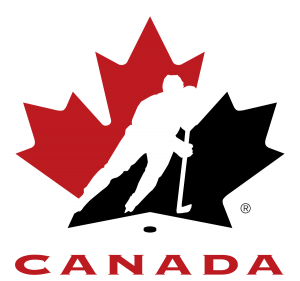
For more about issues in board governance in hockey organizations, read “The Hockey Canada Fiasco: Yves Savoie Offers Lessons for Nonprofits in Canada.”
Cross: One criticism that comes up relates to boards of directors — several types of criticisms. For example, some boards are amateurish in not having competency matrices for the kinds of people you should have on a board. Too often, boards are filled with people who have conflicts of interest, resulting in boards that are mostly filled with people who had been involved in the sport, and it’s never good to have mainly insiders on a board. You need diverse perspectives.
And the boards aren’t diverse in other ways, so they’re ill-equipped to deal with issues related to misuse of athletes, or racism, or other issues.
When I teach my course at Carleton, I show students a picture of the Hockey Canada board of directors in 2018, when the current, alleged criminal activity took place — and the picture shows a group of middle-aged, white men, with no women and no people of colour. Even though girls’ and women’s hockey was probably growing faster than boys’ and men’s hockey, there were no women on the board. And that’s not unique to Hockey Canada’s board; other NSOs are similar.
Fortunately, in the past couple of years, I suspect due to the attention brought by parliamentary and media scrutiny, boards are beginning to diversify.
There’s a lack of board transparency as well. I found this in my own work in trying to go through NSOs’ annual reports and websites to look for sources of funding and other information, and I discovered very little transparency.
 The government takes responsibility for some of this. For years, they’ve pushed for athletic excellence on the world stage; because of the 1976 Olympics in Montreal and the 1988 Olympics in Calgary, when Canada became the only country in history to host two Olympics and not win a gold medal, the government began pushing for medals. As they prepared for the 2010 Olympics in Vancouver, there was a real push to avoid another national sports embarrassment. So, in the early 2000s, Own the Podium was started, and a large portion of government funding depended on athletic success and winning medals at international events.
The government takes responsibility for some of this. For years, they’ve pushed for athletic excellence on the world stage; because of the 1976 Olympics in Montreal and the 1988 Olympics in Calgary, when Canada became the only country in history to host two Olympics and not win a gold medal, the government began pushing for medals. As they prepared for the 2010 Olympics in Vancouver, there was a real push to avoid another national sports embarrassment. So, in the early 2000s, Own the Podium was started, and a large portion of government funding depended on athletic success and winning medals at international events.
The increased pressure on NSOs led, almost inevitably, to abuses of athletes. Susan Auch, former CEO of Speed Skating Canada and an Olympic medalist herself, spoke about this at a parliamentary hearing. She talked about being bullied by Own the Podium and Sport Canada to focus on athletes who would win medals. When that kind of pressure is on NSOs, how do they deal with the successful coaches who are being accused of abuse? The series of abuses in artistic swimming was another example.
Q: What is the Canadian Sport Governance Code, and is it helping at all?
Cross: The Code is a few years old, but it was recently updated by the Minister of Canadian Heritage.
Hopefully, there will be more hearings next year to follow up on implementation of the Code’s provisions, because it calls for things like 40% representation of each gender on boards of directors, for more diversity on NSO boards, for greater transparency in NSOs, and a whole lot more. And the Minister, only when pushed at a parliamentary hearing, conceded that the government would withhold funding from NSOs that didn’t comply with the Code by, I think, April 2025.
One thing that’s disappointing is that the Code recommends more athlete representation on boards, but doesn’t demand that a board position be reserved for athlete representation. For me, that’s a problem. If athletes aren’t members of boards to voice concerns and experiences, that’s a big problem. The Code falls short in that area.
For example, there are power relationships between an NSO and athletes: for an athlete to be funded and to compete internationally, including in the Olympics, athletes have to be recommended by their NSO. This is where the use of non-disparagement clauses and non-disclosure agreements become significant. Athletes have often had to sign these in order to get funding or to compete, so they have to agree to never say anything bad about the NSO or the sport, which has chilled athletes’ abilities to raise allegations of abuse internally and publicly. Athletes brought this up during the parliamentary committee hearings. They said the NSOs were old boys’ clubs, and that athletes would be shunned if they brought up allegations.
Sport Canada needs to be vigilant in following up regarding the Code. The new guidelines say that NSOs can’t use non-disclosure and non-disparagement clauses anymore. But how will we know if NSOs are complying with anything? There has to be follow-up. We’ve been talking about the same governance issues in Canada for more than 40 years. We’ll see if there are any teeth to these recent guidelines and the new regulatory environment.
Photos are courtesy of Logan Weaver, Kevin Hamm, PJ Dakota, Hans Deryk, Canadian Press and Wiki Commons.
Sign up for MPNL’s free newsletter, PANL Perspectives.
Friday, March 8, 2024 in For homepage, Governance, News & Events
Share: Twitter, Facebook
